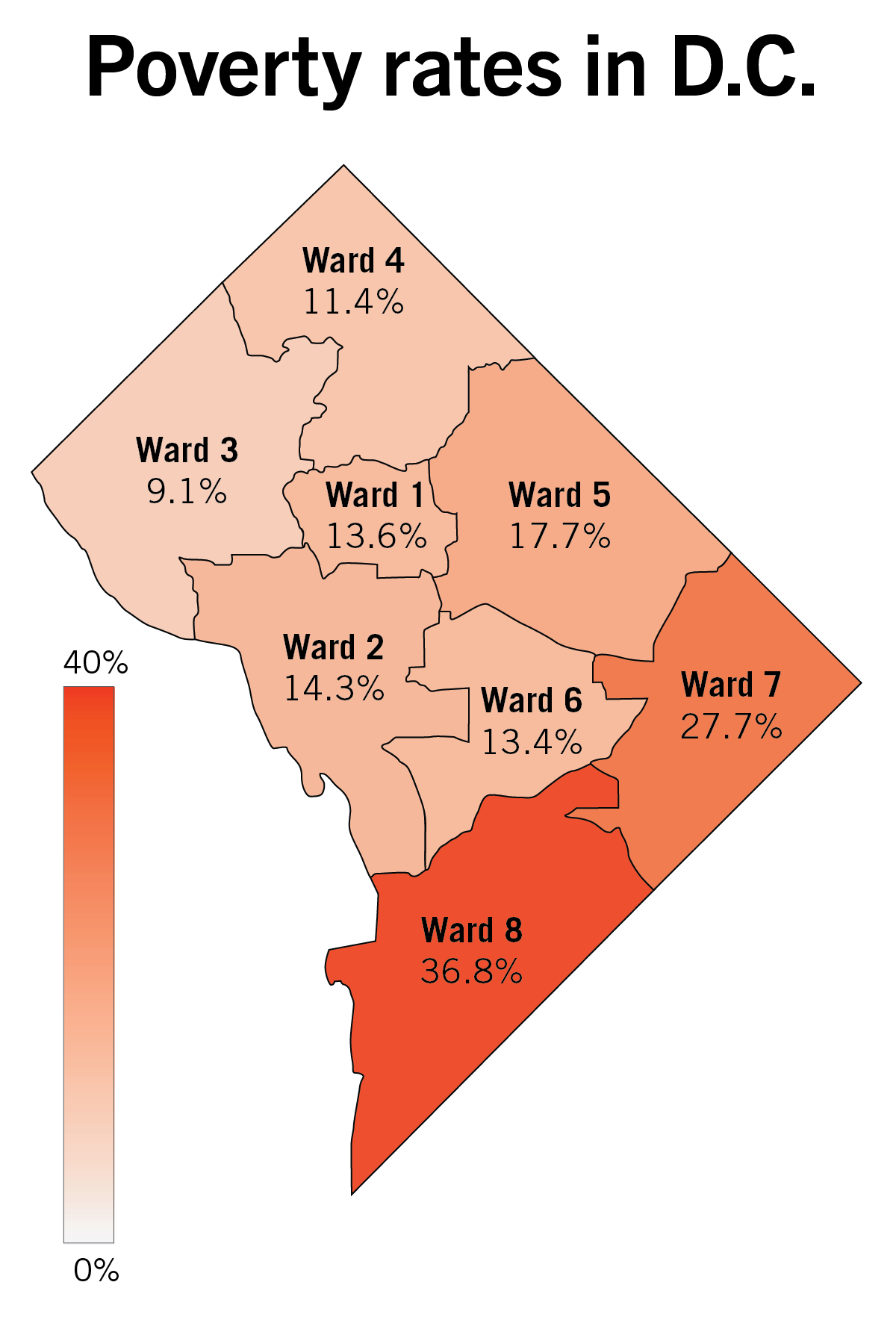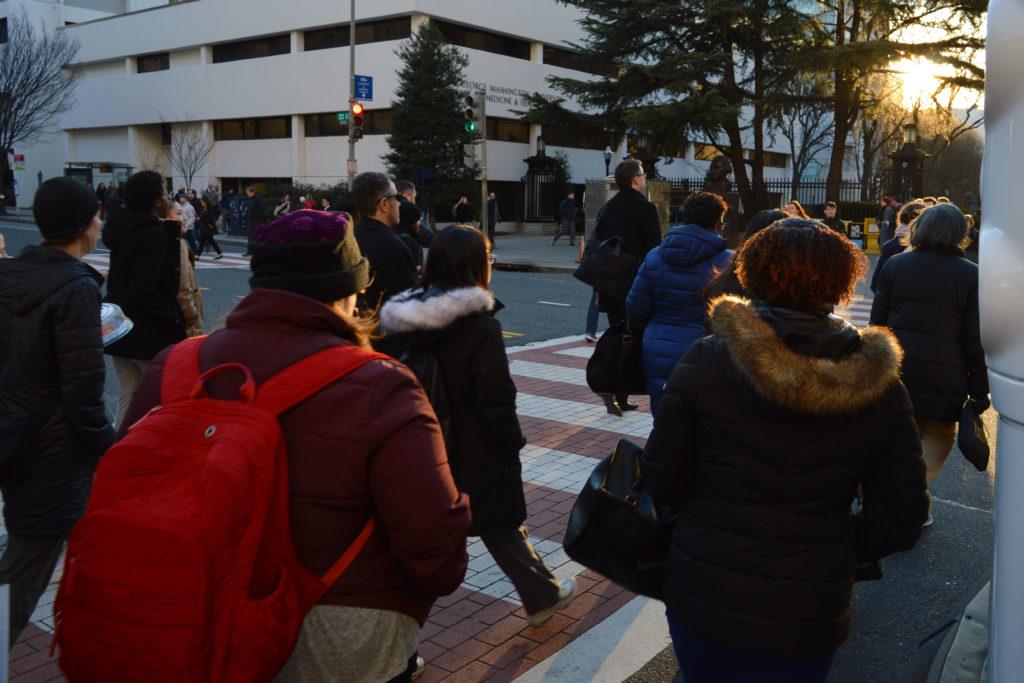Ward 2 is among the District’s most affluent wards, according to data from the recently created D.C. State Data Center Visualization Portal.
The ward, which encompasses Foggy Bottom, has some of the lowest unemployment rates and highest income and education levels in the District. Sociology experts said relatively recent shifts in the demographics of the ward – mostly onset by gentrification – have made Ward 2 more wealthy and educated.
Ward 2 has the second-highest median household income, level of education and employment rate in D.C., second only to Ward 3, which encompasses neighborhoods like Tenleytown and Chevy Chase. At the same time, Ward 2 also has the fourth-highest poverty rate citywide at 14.3 percent.

Zach Slotkin | Senior Staff Designer
Source: D.C. State Data Center Visualization Portal
Michael Bader, an associate professor of sociology at American University, said gentrification in Ward 2 that began in Dupont Circle has since “radiated out” into places like Logan Circle, making the area more attractive to middle- and upper-class residents who enjoy the central location and access to transportation.
“The first waves of gentrification were centered in Ward 2,” Bader said in an email. “Dupont Circle was one of the prototypical examples of gentrification nationwide, not just in D.C.”
Ward 2’s education level is also the second-highest in D.C. More than 80 percent of Ward 2 residents have a bachelor’s degree, which is more than 20 percent higher than the citywide average. Bader said the high education levels correlate with high incomes and can be attributed to new private sector jobs in D.C.
“The growth of the D.C. economy and its diversification away from exclusively government-based business has led to jobs requiring higher education and paying higher taxes,” Bader said in an email.
Median household incomes in Ward 2 are nearly $30,000 higher than the median household income citywide. Ward 2’s median household income of more than $101,000 is higher than incomes in all other wards except for Ward 3.
Jack Goldstone, a professor of public policy at George Mason University, said wards 2 and 3 are similar in all demographics except age. He said Ward 3’s residents are more commonly “families and successful professionals,” while Ward 2 is “more urban” and has “high-education millennials” in CityCenter as well as some older professionals in Georgetown and the West End.
“Ward 3 is stable, wealthy and older; Ward 2 is very dynamic, much younger and more diverse but full of very successful up-and-comers,” Goldstone said in an email. “That is why they both have similar proportions of high-income earners.”
Ward 2 has the second-lowest unemployment rate in D.C. with 2.8 percent, while Ward 3 has a slightly lower rate of 2.4 percent. Ward 8 has the highest unemployment rate in the city at about 12 percent.
Elena Vesselinov, an associate professor of sociology at Queens College, said racial and income-based residential segregation, where certain racial groups or income levels are “unequally concentrated” in neighborhoods, contributes to the varying unemployment rates in D.C.
“These entrenched neighborhood divisions between affluent and poor neighborhoods are responsible for the high levels of inequality in American cities,” Vesselinov said in an email.





